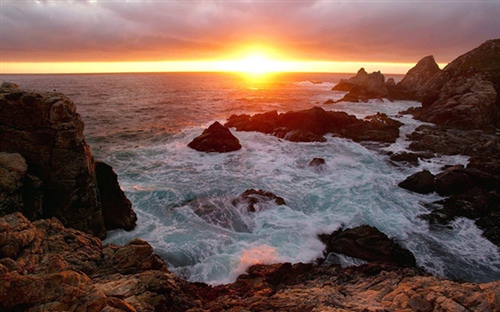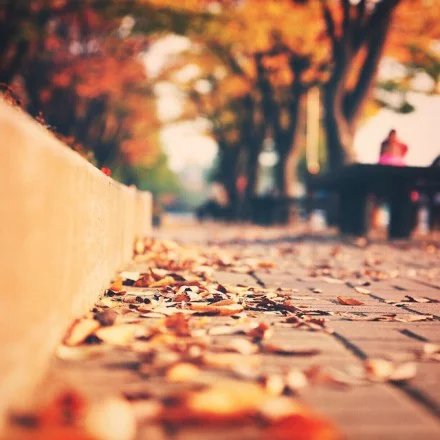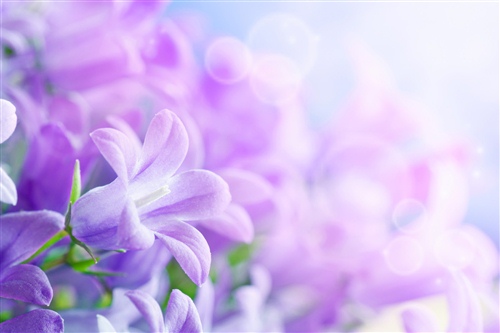
上海概况 导游词
上海不但是中国最大的城市,也是中国最好最气派的城市之一,或者说,是中国最“像”城市的城市。
看过上海就知到别的城市小.和北京一样,上海也是全国人民最向往的地方。
夜上海--谁不知到啊!(唱歌)在全国许多地方,差不多都有所谓“小上海”。
--上海导游词--幽默概况 朋友们:上海是个滩。
所以上海滩很开阔。
开阔的上海滩有着非凡的气派。
的确,上海不但是中国最大的城市,也是中国最好最气派的城市之一,或者说,是中国最“像”城市的城市。
看过上海就知到别的城市小.和北京一样,上海也是全国人民最向往的地方。
夜上海--谁不知到啊!(唱歌)在全国许多地方,差不多都有所谓“小上海”。
比如广东东莞***区(看客人是那个区的)广东有名的夜上海,如过说上海夜京中国第一,那东莞**区当之无愧第3.第2?香港内定了.这种称号无疑是一种“桂冠”,只能加冕于那些比较富庶、新潮、文明的城镇、街道和社区头上,就像当年把上海称为“小苏州”一样。
不过,“小苏州”好像只有上海一家,“小上海”却遍布全国,到处都是。
今日之上海,毕竟比当年的苏州,要风光得多。
然而,“小上海”毕竟不是“大上海”。
领略了“小上海”种种好处的外地人,便都向往着能够亲自到上海去看一看。
很多年来,(20年前,)能够被领导派到上海去办一点公事,差不多一直被视为一次“美差”。
在物质匿乏、供应极差的那些年代,就更是如此。
回家可以吹3天气球即便是现在,对于从未去过上海的人来说,上海无论如何也仍是值得一去的地方,尽管当真去了以后,也许有的人会失望。
当然现在不同了,尽管夜上海越来越漂亮,但毕尽来的人多了,习惯了,来上海90%的人都看过.-------自由发挥--
但,失望归失望,向往归向往。
没去过上海的人,还是想去一去,尤其是那些比较“老派”的人。
在上了点年纪的中国人的心目中上海就是三个代表,上海总是代表着优秀和先进,代表着最正宗的现代工业文明,代表着这个文明“雅致的时代”。
“上海货”那里最直观地获得的感受和结论,比什么书面的说教都更靠得住。
的确,在那个物质匾乏的年代,我们生活中差不多每一点小小的改善都是上海和上海货赋予的。
那时,能拥有一块上海牌手表、一辆永久牌自行车或一架蝴蝶牌缝纫机,凤凰牌羊毛衫是很能让人羡慕不已的;请别人吃一块上海奶油蛋糕或大白兔奶糖,也比现在请吃生猛海鲜还有面子。
这不仅因为东西稀罕,还因为东西好;也不仅是质量好,经久耐用,还因为它们都很精致,有一种特别的味道和情调,一种让人怦然心动的雅致。
更何况上海又是多么大在他们看来,真正所谓“现代国际大都市”,首屈一指的还是上海,尽管这几年深圳的风头颇健。
不过,新型的深圳怎么比得上老到的上海
上海的商品也许比不上广州或深圳新潮,但质量,却让人放心得多,因为上海的基础要厚重得多。
上海,在全中国毕竟是深得人心的。
几乎每个中国人都知道,正如美国不能没有纽约,中国也不能没有上海。
上海是长江流域的龙头,而长江流域则是中国经济的脊梁。
更何况中国的现代化正是从上海起步的。
1953年,美国学者罗兹·墨菲在他的一本关于上海的著作中,把上海称之为“现代中国的钥匙”,认为现代中国正是诞生于上海。
现在,越来越多的外国投资者则用他们的实际行动,表明他们更加看重看好上海。
这不仅因为上海的投资环境好,比方说劳动者和管理者的基本素质和整体文化水平较高,在长期的经济社会生活中养成了一整套适合市场经济的价值观念、行为规范和文化准则等等,还因为上海能给他们以“家园之感”。
对于许多外国人(不管是投资者还是观光客)来说,北京让他们感到神秘,而上海让他们感到亲切。
静安寺对面的万国公墓(现已迁走)里,埋葬着他们的先辈和同胞;而开在过去欧式老房子里的酒吧,又让他们想起百十年前的欧洲。
上海,不论在中国人还是外国人眼里,都是好地方。
如果你是一个小导游,打算怎样向游客介绍南京呢
请设计一段解说词写下来
南京,简称宁,是江苏省会,地处中国东部地区,长江下游,濒江近海。
全辖11个区,总面积6597平方公里,2013年建成区面积752.83平方公里,常住人口818.78万,其中城镇人口659.1万人。
[1-4] “江南佳丽地,金陵帝王州”,南京拥有着6000多明史、近2600年建城史和近500年的建都史,是中国四都之一,有“六朝古都”、“十朝都会”之称,是中华文明的重要发祥地,历史上曾庇佑华夏之正朔,长期是中国南方的政治文化中心,拥有厚重的文化底蕴和丰富的历史遗存。
[5-7] 南京是国家重要的科教中心,自古以来就是一座崇教的城市,有“天下文枢”、“东南第一学”的美誉。
截至2013年,南京有高等院校75所,其中211高校8所,仅北京上海;国家重点实验室25所、国家重点学科169个、两院院士83人,均居中国第三。
上海东方明珠导游词50字
东方明珠是上海的象征,高467.9米,亚洲第一塔,正对金贸大厦,是你理想的去处。
东方明珠欢迎你,上海欢迎你。
我需要一份关于解说“归元寺”的导游词
中英文如下: 归元寺英文导游词 Guiyuan Temple Chinese Buddhist temples are never single buildings. They always consist of a group buildings following a fundamental patter, which can, however, be modified. The main buildings and their symmetrically corresponding secondary buildings form individual groups and courtyards. The entire temple complex is spacious. The building inside the complex are usually single-storied and the main halls are sometimes decorated with a double roof. The towers, pavilions and halls can be multi-storied structures. The Chinese temple complex has been subject to great structural changes throughout the centuries. But temple architects follow the basic principles of secular structures from the Tang Dynasty onwards. The complexes stand on a central axis, usually a north-south axis: east-west only as an exception. (Guiyuan Temple is just the very exception.) The main buildings are strung along this central axis, their broadest sides facing south or east. The most important and most frequently presented building inside a Buddhist temple complex are the main entrance gate, the bell and drum towers, the Hall of the Heavenly Kings, the Hall of the Buddha and a pagoda. Buddhism is said to be founded in India in the 6th century BC by Siddatha Gautama (BC565 –BC486), the son of a nobleman and member of the Kshatriya caste near the present borders of India and Nepal. Buddhism advocates that all the people are created equal and turns against the caste system of Brahmanism, so it was popular with the common people. It was said that Buddhism was spread to China in 2 BC. At the beginning, it was only regarded as a kind of witch. About 200 AD, Chinese version of Buddhist s criptures began to appear, and thus, Buddhist doctrines began to emerge with traditional Chinese religious thought. From 2nd century to late 6th century, translation and research of Buddhist sects with Chinese characteristics were becoming more and more popular and many temples were built, which reached its peak in Sui Dynasty (581AD-617AD) and Tang Dynasty (618-907). Some Buddhist sects with Chinese characteristics came into being. Buddhism exerts a great influence on Chinese philosophy, literature, art and folk customs. What is presented before our eyes is a copper statue of a famous bodhisattva in Hynayana Buddhism. Bodhisattva is a tittle which is only next to Buddha. This statue is the image of Avalokitesvara, which has been popular with Chinese people or more than 1,000 years. She is called the Goddess of Mercy cordially by Chinese and is regarded as the symbol of kindness, mercy and benevolence. When we visit the Avalokitesvara Pavilion after a while, I will give a detailed introduction about her. This copper statue was sent to Guiyuan Temple by Taiwan Buddhists in September 1990. It shows that all Chinese, whether in the mainland or in Taiwan, are eager for the reunion of the country, even including religion believers. The building we see now is the Buddha Hall where one certain Buddha and his two assistant bodhisattvases are worshiped. This Buddha is Amitabha Buddha. Amitabha means incomparable brightness. According to Buddhism, time and space is limitless and thus there are many many Buddhas in different spaces and times. But in a certain space or in a certain period of time, there is only one certain Buddha who is in charge of instructing all living creatures. Amitabha Buddha is the Buddha who presides over the Land of Ultimate Bliss in the west, which will come in the future. Buddhist s criptures describe the Land of Ultimate Bliss as a wonderland, in which no pain exists and the people enjoy their lives. In one word, it’s very attractive. Some people will think it must be very difficult to enter such a world. How can I go to such a paradise? Maybe I have to work hard and bear a lot of sufferings. In fact, it’s very easy to enter the world. He only need often murmur ‘May Buddha preserve us’ sincerely. It’s enough. You see, the statue in the middle is the very Buddha. On his left is the Goddess of Mercy. On his right is the other bodhisattva who follows the Buddha. It is said that he can save all the living creatures from three kinds of terrible disasters. Now, let’s step into the Buddhist s criptures Pavilion where the s criptures of Buddhism are kept. But I ‘m afraid what attracts our attention at the first sight must be this snow-white statue. It is a statue of Sakyamuni, the founder of Buddhism. This statue was carved out of a big piece of jade which is 2-meter-tall and weighs 3 tons. It was carved by Myanmar handicraftsmen and donated to the temple by the Rangoon Buddhists in 1935. If we watch the statue, we may sense that the peaceful expression on the Buddha’s face has brought us to a quiet and harmonious state. The last building we will visit is the Avalokitesvara Pavilion in the north yard. When we entered the yard just now we saw a statue of her. Now I’d like to introduce her carefully. As a goddess, she swore that she would not become a Buddha until all the living creatures suffering from pains were saved. So she became a bodhisattva who is most popular among the people and attracts the most believers of all the gods and goddesses in Buddhism. It was said that one would be saved from trouble and disaster as long as he (she) chanted her name and if it was heard by her. Thus she is called Guanshiyin, which means ‘hearing or looking on the voices of the suffering’. Because of her kind heart and benevolence she got another title ‘the Goddess of Mercy’. According to Buddhism, bodhisattvases have no distinction of sex, that is, they are neither male nor female, because they are immortals. But it’s very strange and interesting that most of bodhisattvases were engraved or carved in the images of various kinds of men in human society. Changes didn’t take place until an emperor’s mother thought it was inconvenient to worship a male bodhisattva in her bedroom. From then on, Guanshiyin, the bodhisattvas began to appear before her believers in the image of a beautiful and elegant lady. We’ll pay a visit to a very serious, sacred place. Generally, the place is regarded as the most holy by Buddhists. It is the Grand Hall, where the founder of Buddhism, Sakyamuni is worshiped. It is always the center of a Buddhist temple in construction and in Buddhists’ mind. The statue in the middle is Sakyamuni. According to Buddhism his mother gave birth to him in a garden. He belonged to Kshatreya Caste. He married his cousin when he was 16 or 17 years old. At the age of 29, he was confronted with the sights of an old man, a sick man, a corpse, and a wandering ascetic. With eyes opened to aspects of life newly revealed to him, he broke from the material world and became an ascetic. Six years later, he gave up mystic concentration that at last brought him enlightenment under a bo tree. He then founded an order of mendicants and spent his next 45 years preaching his ideas until his death. These two statue beside the Buddha are his two disciples. The one on the right was said to be Sakyamuni’s cousin and he had good memory so that he could remember all the Buddha told his disciples. The one on the left was said to be the lord of Brahmnism and he once was Sakyamuni’s tutor. But afterwards he was convinced by Buddhism after long-term debate between Buddhism and other religions and he accepted Sakyamuni as his tutor. Thus he became the eldest one of all Sakyamuni’s disciples. Next, we’ll pay a visit to the Ahrat Hall in the south court. The Ahrat Hall is an important structure in a Buddhist temple. But not all temples have an Ahrat Hall, especially, well-kept Ahrat Halls are very rare in China. This one is among them, and what’s more, it has its own unique characteristics. Generally, an Ahrat Hall is a square building. The building is subdivided into four small square courts so that the hall can get enough sunlight. This kind of structure show some lucky implies in Chinese Buddhist culture. Another characteristic about the hall lies in these sculptures themselves. They were neither made up of wood, nor stone, nor clay. A special way was taken in making them, which could prevents them from being burned, being soaked or being eaten by insects. All the sculptures were floating in water while Wuhan was flooded in 1954, but, surprisingly, they were sound and safe after the flood had receded. It was really a wonder. Ahrats are the immortals in Buddhism. But when you have a look around the sculptures, you may find from the expressions on their faces that they are so familiar to you. That’s only because they were molded on the basis of the people in the reality, so they are human beings in our daily life rather than immortals. Ahrats are the symbols of harmony, happiness, and good luck, so the Wuhan natives have got used to counting ahrats since ancient time to pray for peace. There are a few ways of counting ahrats. We can count from the first ahrat from left to right or from right to left, when we just enter the hall. We can also choose any ahrat as our starting point, and count in the same way, left to right or right to left. We should base counting on our own ages whatever we take. For example, I’m 25, so I should stop in front of the 25th ahrat from the starting ahrat. The sculpture in front of which I stop is my lucky ahrat. My lucky ahrat will accompany me to spend a peaceful and lucky year. Wouldn’t you like to have a try now? If you need, I can explain connotation of some ahrats. That’s all for the explanation to Guiyuan Temple. Thank you for your cooperation and understanding. You will have another 30 minutes to have a look around the temple. If you have any problems, do let me know. I would like to repeat our bus number, A3074. Please don’t forget. See you later. 各位游客朋友们: 我代表我们××旅行社欢迎大家的到来。
我姓张,大家就叫我小张好了
就好像人们常说的那样,相逢就是缘分。
能和大家相逢在美丽的江城武汉并和大家一起度过这段美好的时光,我感到非常荣幸。
这位是我们的司机倪师傅,驾驶经验非常丰富,所以各位在旅游途中可以放心地欣赏窗外武汉的美景。
今天就由我们两个为大家服务,大家有什么问题可以尽管提出来,我们将尽力为您解决。
希望能用我们的热心、耐心和细心换来你的放心、开心。
归元寺 归元寺位于武汉市内,是清顺治十五年(1658)浙江僧人白光、主峰来此创建的。
1983年被国务院确定为汉地全国重点佛教寺院。
现为湖北省佛教协会和武汉市佛教协会的所在地。
这里古树参天,花木繁茂,泉清水绿,曲径通幽,是“汉西一境”。
归元寺由北院、中院和南院三个各具特色的庭院组成,拥有藏经阁、大雄宝殿、罗汉堂三组主要建筑,占地面积17500多平方米。
北院的主要建筑是藏经楼,是一座两侧五开间的楼阁式建筑,高约25米,顶为大脊,鱼角搬爪,飞栱飞檐,古朴玲珑;当面为四柱通天,双凤朝阳,五龙戏珠。
整个建筑精巧壮观,金碧辉煌。
这里藏有许多佛教文物,除藏经外,还有佛像、法物、石雕、书画碑帖及外文典籍,是国内收藏佛像较多的一个佛寺。
1935年太虚法师出访缅甸时,仰光的佛教徒赠他一尊1吨多重的玉石雕成的释迦牟尼佛像,就供奉在这里。
这种佛像在我国只有三尊,其他二尊分别列供于北京和上海。
藏经阁里收藏的佛经有:清代《龙藏》一部,宋代影印本《碛砂藏》一部,清末民初上海印《频伽藏》一部。
另外还有两件珍品:一是清光绪元年(1875),湖南衡山69岁老人李舜千书写的“佛”字。
“佛”字是在长宽不超过6寸的纸上,由《金刚经》和《心经》原文共5424个字组成。
每个字只有芝麻大,肉眼分辨不清。
用30倍放大镜看,笔力挺秀,是书法珍品。
另一件是武昌僧人妙荣和尚刺血调和金粉抄成的《华严经》和《法华经》,字体娟秀,堪称精品。
中院的主体建筑是大雄宝殿。
该殿初建于清顺治十八年(1661),后经多次维修。
现大雄宝殿是清光绪三十四年(1908)重修。
大殿正中供奉着释迦牟尼坐像,两侧为其弟子阿难和迦叶像。
释迦偏袒左肩,结跏趺坐,庄严静穆。
佛像后背是用樟木雕刻而成的“五龙捧圣”的图案。
佛像前还有韦驮、弥勒、地藏像。
佛像后是一组海岛观音像。
只见海岛观音赤足站立,左右侍立着一龙女和童子,背后是一面高达八尺的泥塑悬崖峭壁,足下碧波万顷,怒涛汹涌。
整个塑像向前倾覆。
人们仰视上去,只见观音衣袖似在飘动,正在汹涌的波涛上迎面向你走来,增加了宗教艺术的感染力。
佛像前的供桌,是一件不可多得的木刻珍品。
供桌高4丈8尺,横阔1丈2尺,深宽2.5尺,前嵌垂栏,宽1.5尺,高0.6尺,其间分为五格,深画镂空。
图案描绘的是唐玄奘取经回长安时,君民夹道欢迎的场面:有唐僧、孙悟空、猪八戒、沙和尚等《西游记》人物,有李世民以下文武百官、侍卫、庶民百姓;有亭院殿墙,车马山水,幢幡宝盖,香炉蜡台等一应俱全。
综观全图,繁复活泼,盛况空前。
垂栏下沿为五龙云彩,周围匝绕,以四虎腿支地,生动有力。
相传这一樟木雕刻由十人历时一年才完成。
大雄宝殿前的韦驮殿内,供奉着一尊木雕韦驮像,身着铠甲,手持宝杵,威武挺立,用我国古代武将形象表达了古印度神话中“四大天王三十二将”之首的护法神形象。
这座木雕系用整块樟木雕成,线条刀法都是唐朝风格,是归元寺的艺术珍品,也是我国雕刻艺术品中的一件宝贵遗产。
归元寺属曹洞宗,又称归元禅寺,它与宝通寺、溪莲寺、正觉寺今称为武汉的四大丛林。
希望大家旅途愉快,谢谢。
上海东方明珠塔导游词
小孩子要自己动脑筋哦
介绍南通的导游词
导游词开场白有一句广告词说:心随我动,沟通无限,那我与在座各位朋友的沟通就从我的自我介绍开始,我是来自春天旅行社的导游,我姓王,大家可以习惯的叫我王导或者是小王,小王我是地地道道的东北人,具有东北人的主要性格就是热情、豪爽,所以说在这三天的行程中如果您有什么问题和要求的话就尽管的提出来不要客气,只要你的要求是在合理而可能的情况下,我一定会尽我自己最大的努力为你解决。
那同我一起为大家服务的还有司机张司付,那我与张司付可以说是旅游界中的最佳组合,也可以说是黄金榙档,不客气的说我们是强强联手,所以说在座的各位你这次旅行交给我们,不仅可以放心,还有舒心、开心。
也许在座的各位朋友对您参团的旅行社并不是很熟悉,虽然说我们是今年新加盟旅游界的晚辈,但是从老总到经理到计调到导游,可以说我们的组团经验、操作能力能让你在这座城市能对旅游有一个新的认识、希望我们的加入能够带来XX市旅游界的春天,同时有了在座各位朋友的支持我们依然相信春天的花一定会开,而且会永远绽放。
那么现在大家选择出游,不单单是开阔视野,增长见识,更多的是寻找一份快乐,所以我希望在座的各位在这次旅行中你不仅仅是微微一笑,更希望您是开怀大笑,更希望你不再只有一份开心,而是能够找到一百个开心的理由,让我们采拾一路的精彩,留下难忘的美好回忆。
所以说一座美丽的城市,一处漂亮的风景,都要有好的心情去体会,有一句广告词说的非常好:人生就像一场旅行,不
谁帮我写一篇简介湖州的导游词
太湖南岸的湖州是全国著名的蚕乡,也是世界丝绸文明的发祥地之一,湖丝、湖州宋锦、双林绫绢闻名中外。
湖州,具有典雅的江南水乡风貌,其自然景观以“山水清远”见长。
“苍山北峙,群山西迤,双溪夹流,泓亭皎彻,山水映发,冲和修集”,概括地说明了湖州山水特色。
湖州是中国环太湖地区唯一因湖而得名的城市。
它地处浙江省北部,东临上海,南接杭州,西近南京,北与苏州、无锡隔太湖相望,是江、浙、皖、沪三省一市毗邻地区重要的商品集散地和水陆运输要塞。
湖州市现辖德清、长兴、安吉三县和吴兴、南浔二区。
总人口257万,其中市区人口108万;总面积5818平方公里;城市化水平达到44.1%,中心城市建成区52.9平方公里。
湖州是长江三角洲地区重要的对外开放城市,是国务院确定的接轨浦东“先行规划、先行发展”的十四个重点城市之一。
改革开放以来,全市经济快速、持续、健康发展。
农业、工业、交通、邮电、商贸、金融、科技等欣欣向荣,社会各项事业成绩显著。
湖州素有“丝绸之府、鱼米之乡、文物之邦”之称。
自战国时期(公元前333年)楚春申君筑菰城至今,湖州已有2300多年的历史。
市内名胜众多,古迹遍布。
湖州是世界丝绸文化发祥地之一。
在市郊钱山漾遣址出土的蚕丝织物,是迄今为止发现的世界上最悠久的蚕丝织物之一,有4700历史。
湖州丝绸不仅早已“冠绝海内”,而且经丝绸之路获“湖丝衣天下”的美誉。
历代被列为“文房四宝”之首的湖笔也产于湖州。
湖州为典型的江南亚热带季风气候。
气候温和,四季分明,雨量充沛。
全年平均温度为摄氏16度,年平均降雨量为1240毫米。
湖州是山水清远、景色秀美的城市,北傍太湖浩渺烟波,西倚天目苍山竹海,市内楼厦林立、风貌清新,乡间小桥流水、景色如画。
湖州有着悠久的历史和古老的文化,市级以上文保单位105个。
公元前248年,楚春申君黄歇筑下菰城至今已有近2300年历史,下菰城墙至今保存完好,为国内罕见的古城遗址。
人杰地灵的湖州历代人才辈出,唐代陆羽隐居湖州所撰的《茶经》成为闻名中外的第一部茶叶专著;北宋教育家胡瑗创立安定书院,人称“胡学”;艺术大师赵孟 、吴昌硕开创的“赵体”书、“吴门”画,在中国乃至世界艺术史上留下了深远的影响。
这些连同绸文化、笔文化、茶文化、饮食文化等共同构成了湖州独具魅力的人文旅游资源。
湖州西倚开目,北滨太湖,东西苕溪和运河水系贯流全境,自然景观尤以“山水清远”著称。
辖区内不乏秀丽的山区风光和悠久的水乡景观, 可谓山、水、湖、泉、洞五类俱全。
湖州的游览点众多。
市区就有巧设精雕的飞英塔,在江南独树一帜的铁佛寺,安闲静雅的莲花庄公园:稍远则有太湖边的“石钟乳音乐厅”--黄龙宫,南洵镇有浙江三大藏书楼之一的嘉业堂藏书楼等,德清的莫干山已久负“清凉世界”的避暑胜地盛名,安吉的龙王山,长兴的顾绪山也各擅春秋,游人往往流连忘返。
随着旅游事业的发展,目前已经初步形成了各具特色的三条旅游线路。
麻烦采纳,谢谢!



